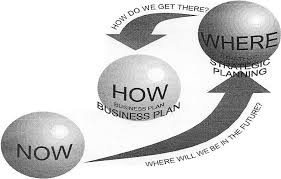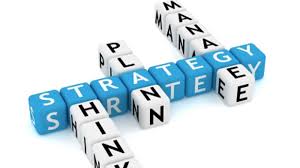Writing A Business Plan

There are two major purposes for writing a business plan. The most important is to serve as a guide during the life of your business. Your business plan is the blueprint of your business and will very well serve to keep you on the right track. To be of value, your plan must be kept current. If you spend the time to plan ahead, many pitfalls will be avoided and needless frustrations will be eliminated.
 The other purpose is that the business plan is a requirement if you are planning to seek loan funds. It will provide potential lenders with detailed information on all aspects of the business’s past and current operations and provide future projections. The text of the business plan must be concise and yet must contain as much information as possible. This sounds like a contradiction, but you can solve this dilemma by using the Key Word approach. Write the following key words on a card and keep it in front of you while writing:
The other purpose is that the business plan is a requirement if you are planning to seek loan funds. It will provide potential lenders with detailed information on all aspects of the business’s past and current operations and provide future projections. The text of the business plan must be concise and yet must contain as much information as possible. This sounds like a contradiction, but you can solve this dilemma by using the Key Word approach. Write the following key words on a card and keep it in front of you while writing:
Who What Where When Why How How Much
Answer all of the questions asked by the key words in one paragraph at the beginning of each section of the business plan. Then expand on that statement by telling more about each item in the text that follows.There is no set length to a business plan. The average length seems to be 30 to 40 pages, including the supporting documents section. Break the plan down into sections. Set up blocks of time for work with target dates for completion. Writing an effective business plan takes discipline, time and privacy.
6 things every business plan should have
In formulating your business plan, you would want to take into consideration the following as well as ensuring that they are incorporated in the plan.
 1. The Cover Sheet:
1. The Cover Sheet:
The first page of your business plan will be the cover sheet. It serves as the title page of your plan. It should contain the following information: Name of the business, business address, business phone number (include area code), business logo (if you have one), names, titles, addresses, phone numbers (include area code) of owners, month and year in which the plan is issued and the name of the one preparing the plan (i.e. your name).
2. Statement of Purpose:
The statement of purpose is also called the mission statement or executive summary. If your lender were to read only this information, he or she would know the name and nature of your business, its legal structure, the amount and purpose of your loan request and your plan for repayment. Use the key word approach mentioned earlier. Be concise and clear. The statement of purpose is contained on one page. Although it is positioned after the cover sheet, it is most effectively written after the plan has been completed. At that time, all the information and financial data needed are available.
 3. About the Business:
3. About the Business:
The first major section of your plan covers the details of your business. Begin this section with a one-page summary addressing the key elements of your business. Use the key word system to help you write concisely. Address all of the topics as they relate to your business in an order that seems logical to you. Include information about your industry in general, and your business in particular. This section should talk about the legal structure of the business, description of the business, the products or services, location, management, personnel, methods of record keeping, insurance, security and a summary of what the business will be all about.
 4. The Marketing Plan:
4. The Marketing Plan:
The second major section of your business plan covers the details of your marketing plan. A good marketing plan is essential to your business development and success. Include information about the total market with emphasis on your target market. You must take the time to identify your customers and find the means to make your product or service available to them. The key here is time. It takes time to research and develop a marketing plan, but it is time well spent. Remember that you need a clear understanding of who will purchase your product, who will make use of your service, why they will choose your business and how they will find out about it. Begin this section with a one-page summary covering the key elements of your marketing plan and also cover the following topics in any order you like: target market, competition, methods of distribution, advertising, pricing, product design, timing of market entry, location and industry trends.
5. Financial Documents:
You are now ready to develop the third area of your plan. Financial records are used to show past, current and projected finances. Some of the major documents you will want to include in your business plan are: Summary of Financial Needs, Application of Loan Funds, Cash Flow Statement (Budget), Three-year Projection, Break-even Analysis, Actual Performance Statements, Balance Sheet, Income (Profit and Loss) Statement and Loan Application/Financial History. If you are financially inclined, now is the time to do some research because you’ll definitely need adequate financial planning knowledge and skills.
6. Supporting Documents:
Now that you have completed the main body of your business plan, you will need to include a separate section for any additional records that should be included to support your plan. Supporting documents are the records that back up the statements and decisions made in the three main parts of your plan. As you are compiling the first three sections, it is a good idea to keep a separate list of the supporting documents that you mention or that come to mind.
Writing A Business Plan
![Writing A Business Plan]() Reviewed by Torrah
on
12:40:00
Rating:
Reviewed by Torrah
on
12:40:00
Rating:





No comments: